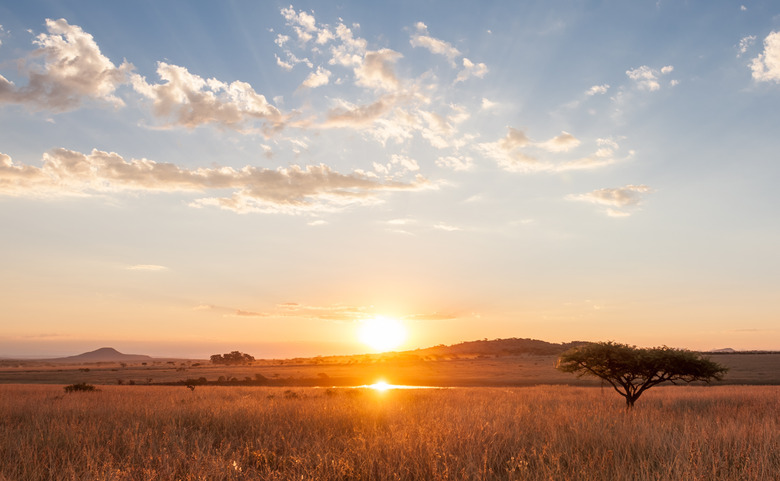The Average Sunlight Of The Grassland Biome
Grasslands occur both naturally and artificially (farm lands) on every continent except Antarctica. They are usually expanses of land that are dominated primarily by grasses, and exist in temperate and sub-tropical regions that experience hot summers and cold winters. Where the levels of precipitation are too low to sustain forest and too high to give way to deserts is where most grasslands thrive.
Average Sunlight
Average Sunlight
The average sunlight that falls on any particular grassland area will depend primarily on its latitude, as well as on patterns of weather such as cloud cover or precipitation, and the time of year. Grasslands occur all over the world in dry mid-latitude locations between 30 to 55 degrees north and south of the equator. The Astronomical Applications Department of the U.S. Naval Observatory records the actual hours of sunlight for locations all around the world (see Resources).
Temperate Grasslands
Temperate Grasslands
Temperate grasslands include the planes and prairies of North America, the steppes of Russia and Europe, and the Pampas of Argentina. These grasslands typically experience long hotter days in the summer, and short colder days in the winter. Using the Astronomical Applications Department database, it is possible to find the number of daylight hours that each area experiences, and a little math determines the average. The tool provides a daily and monthly table of records for a given location over an entire year. Using the tool for 2010 (the last complete year of data), the average amount of sunlight that falls on the Prairie regions of North America is about 12.1 hours, and for the steppes of Russia and the Pampas it's approximately 12.2 hours.
Savanna
Savanna
The grasslands located on the African continent are typically referred to as savannas and have a higher level of precipitation and hotter temperatures than their temperate counterparts. In savannas, there is usually enough moisture to support sparse trees, but the landscape is still dominated by grasses. The African Savanna is between latitude 15 degrees north and 30 degrees south. Using the Astronomical Applications database, the average sunlight for this area is approximately 10.95 hours.
Worldwide Average Sunlight in the Grasslands
Worldwide Average Sunlight in the Grasslands
Grasslands are an intermediary stage, and so they are constantly expanding or contracting, giving way to desert when the precipitation decreases, or forest when there is enough moisture to support trees. For this reason, determining the actual average of sunlight hours that fall upon grasslands regions of the world specifically and accurately is a virtual impossibility. But with average values derived from the U.S. Naval Observatory, we can see that the worldwide average of sunlight in the grassland biome is approximately 11.86 hours.
Cite This Article
MLA
Nicholas, Randy. "The Average Sunlight Of The Grassland Biome" sciencing.com, https://www.sciencing.com/average-sunlight-grassland-biome-8689555/. 13 March 2018.
APA
Nicholas, Randy. (2018, March 13). The Average Sunlight Of The Grassland Biome. sciencing.com. Retrieved from https://www.sciencing.com/average-sunlight-grassland-biome-8689555/
Chicago
Nicholas, Randy. The Average Sunlight Of The Grassland Biome last modified March 24, 2022. https://www.sciencing.com/average-sunlight-grassland-biome-8689555/
